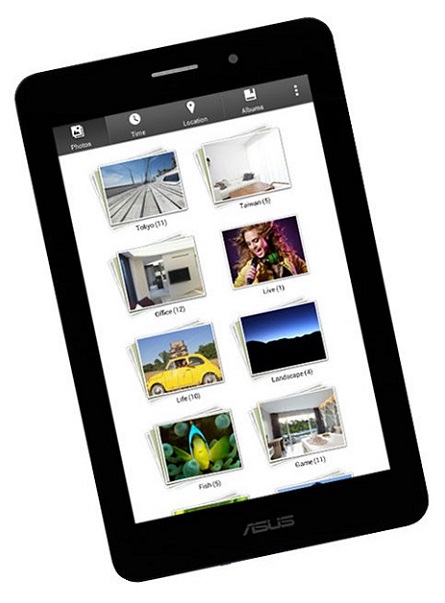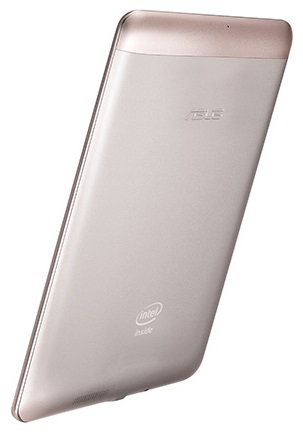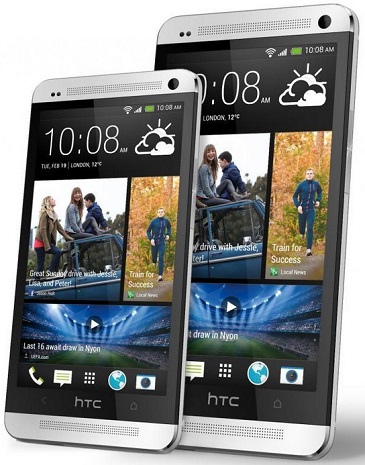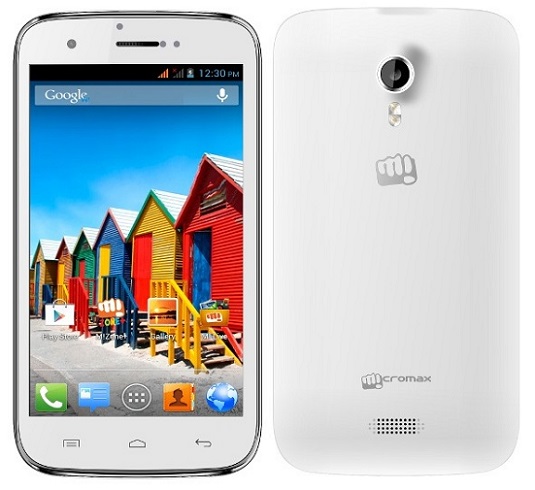Asus released the Fonepad phablet in April 2013. The Fonepad is not like most phablets, it is larger and with a 7 inch screen, it is the biggest phablet you could ever find and just on the borderline of being a tablet. The device measures 196.4 x 120.1 x 10.4 mm (7.73 x 4.73 x 0.41 inches) and at 340g (11.99 oz), it is definitely much heavier when compared to other phablets. By comparison the popular Samsung Galaxy Note II weighs 183 g (6.46 oz), but on the other hand the Note II has a 5.5 inch screen.
The display on the Fonepad supports resolutions of 1280 x 800 pixels with a 216 pixels-per-inch screen. It has a front camera of 1.2 megapixels, but surprisingly, there is no camera at the back. Given the size of the device, I would have expected Asus to include a camera at the back for taking photos and recording videos, but Asus said that this was done purposely to keep the cost of the Fonepad down. Truth to be told, Asus did release a Fonepad version with a rear 3.15 megapixel camera, a resolution of 2048 x 1536 pixels and video recording of 720 pixels. However this version was only released in a few markets and this particular version is not readily available from many retailers.
 Also surprising is the fact that the Fonepad only comes with a single core Intel Atom Z2420 1.2 GHz processor and 1 GB of RAM. Having said this, the new phablet from Asus fared fairly well in benchmark tests. While the Fonepad is no powerhouse, it is more than suitable device for the average user who does not mind a little bit of lag and is not interested in running the most graphic intensive games. The graphics processing on the Asus phablet is a PowerVR SGX540.
Also surprising is the fact that the Fonepad only comes with a single core Intel Atom Z2420 1.2 GHz processor and 1 GB of RAM. Having said this, the new phablet from Asus fared fairly well in benchmark tests. While the Fonepad is no powerhouse, it is more than suitable device for the average user who does not mind a little bit of lag and is not interested in running the most graphic intensive games. The graphics processing on the Asus phablet is a PowerVR SGX540.
On the plus side is the fact that the battery is that 4,720mAh battery very long lasting, which according to Asus, will provide up to 9 hours of talk time. Apart from that there is power-saving utility which helps increase the battery life even further. However the battery is non-user replaceable.
The Fonepad’s operating system is Android 4.1.2 Jelly Bean. There are two Fonepad versions: one comes with 8 GB of internal memory storage and the other which comes with 16 GB of internal memory storage. Bother versions have a memory card slot for inserting a microSD card of up to 32 GB. Apart from a GPS sensor, the phablet includes a proximity sensor, an accelerometer and a compass.
Given the size of the Fonepad, it is not possible for most people to use it with one hand. It is probably also too big to fit into most pockets. Is the Fonepad too big to be used for making calls? Maybe yes, but given that it is nowadays common to see people taking photos with their tablets, there is indeed nothing wrong with using such a big device for making phone cheap replica watches calls. Having said this, some might feel stupid with holding such a massive device to the ear. But after all, everybody should mind his or her own business, so why bother with what people may think after all.
 Still, the fact remains that anyone who has small hands will probably find it difficult to use this mega phablet for making phone calls. However, making calls should not be the primary reason for buying a Fonepad. Anyone buying the Fonepad is probably more interested in using the phablet for browsing the internet, social networking and sending emails.
Still, the fact remains that anyone who has small hands will probably find it difficult to use this mega phablet for making phone calls. However, making calls should not be the primary reason for buying a Fonepad. Anyone buying the Fonepad is probably more interested in using the phablet for browsing the internet, social networking and sending emails.
The phablet is available in gray and gold colours and its backside is made from aluminum, which makes it a fairly robust device. Even so, the Asus Fonepad is surprisingly cheap: Amazon.co.uk is selling the 8 GB version (no rear camera included) for £179.97 (approximately $270 or €209). It seems that Asus will not be selling the Fonepad in the US, but that does not stop US customers from buying the Fonepad from some online retailer.




 Also surprising is the fact that the Fonepad only comes with a single core Intel Atom Z2420 1.2 GHz processor and 1 GB of RAM. Having said this, the new phablet from Asus fared fairly well in benchmark tests. While the Fonepad is no powerhouse, it is more than suitable device for the average user who does not mind a little bit of lag and is not interested in running the most graphic intensive games. The graphics processing on the Asus phablet is a PowerVR SGX540.
Also surprising is the fact that the Fonepad only comes with a single core Intel Atom Z2420 1.2 GHz processor and 1 GB of RAM. Having said this, the new phablet from Asus fared fairly well in benchmark tests. While the Fonepad is no powerhouse, it is more than suitable device for the average user who does not mind a little bit of lag and is not interested in running the most graphic intensive games. The graphics processing on the Asus phablet is a PowerVR SGX540. Still, the fact remains that anyone who has small hands will probably find it difficult to use this mega phablet for making phone calls. However, making calls should not be the primary reason for buying a Fonepad. Anyone buying the Fonepad is probably more interested in using the phablet for browsing the internet, social networking and sending emails.
Still, the fact remains that anyone who has small hands will probably find it difficult to use this mega phablet for making phone calls. However, making calls should not be the primary reason for buying a Fonepad. Anyone buying the Fonepad is probably more interested in using the phablet for browsing the internet, social networking and sending emails.